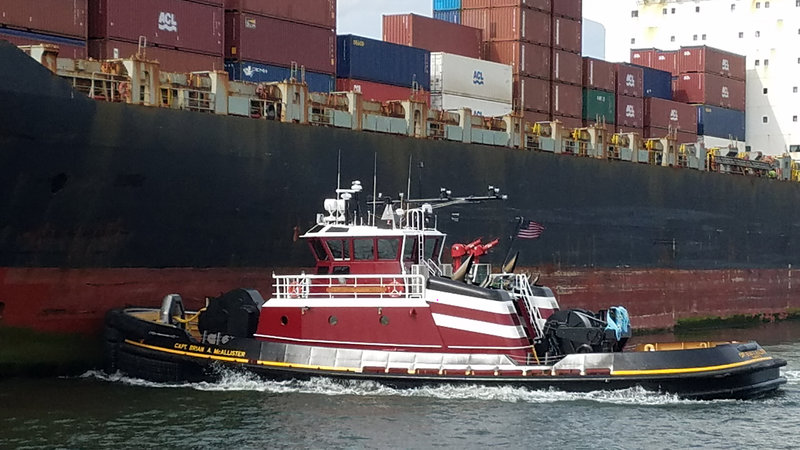Newer clean diesel technology for large tugboats offers a highly cost-effective way to reduce air pollution in ports, according to an analysis commissioned by the Diesel Technology Forum and the Environmental Defense Fund.
NOx is a major component of urban smog, and port authorities in California have prioritized plans to reduce emissions from vessels and shore side equipment. West Coast naval architects and builders are leading with new Tier 4 diesel and hybrid propulsion designs, and East Coast ports are seeing the arrival of their first Tier 4 tugs.
The study also looked at replacing locomotive engines, another major source of emissions in ports with their rail switching yards and intermodal connections. Upgrading diesel switcher engines can remove an average 9 tons of NOx annually with an average cost of $15,201 per ton, the report says.
That compares favorably with other diesel emission reduction projects, such as converting heavy truck and bus fleets that can cost up to more than $30,000 per ton of NOx, according to the groups that sponsored the study. They say states can tap the $2.9 billion Volkswagen environmental trust fund – established to mitigate the carmaker’s cheating on diesel emission standards – to help fund diesel conversions in their ports.
“The substantial reductions possible with clean diesel replacements offer great news for communities near ports and rail yards,” said Allen Schaeffer, executive director of the Diesel Technology Forum. “While engine replacement projects are costly, the return on the investment on a dollar-per-ton of emissions reduced makes these projects a compelling choice.”
Air quality in many port cities falls short of federal health standards, and repowering tugs and locomotives “can deliver cleaner, healthier air faster to at-risk communities near ports,” said Dr. Elena Craft, senior health scientist with the Environmental Defense Fund.
Tier 4 emission standards for marine diesels over 804 hp began coming into play in 2015, with the goal of reducing emissions compared to previous technology by 88% to 95%. But the U.S. Environmental Protection Agency has estimated that by 2020 only 3% of the marine workboat fleets will have the cleaner engines without more incentives to accelerate conversions.
“Right now, state governments have an opportunity to get more of these clean technologies out in the field to deliver immediate emission reductions for communities near port operations,” said Schaeffer. “The recent settlement with VW established an environmental remediation program that will soon provide $2.9 billion to states for the sole purpose of reducing NOx emissions. Policymakers looking to reduce emissions quickly for communities near ports and rail lines should consider these highly cost-effective clean diesel solutions.”





